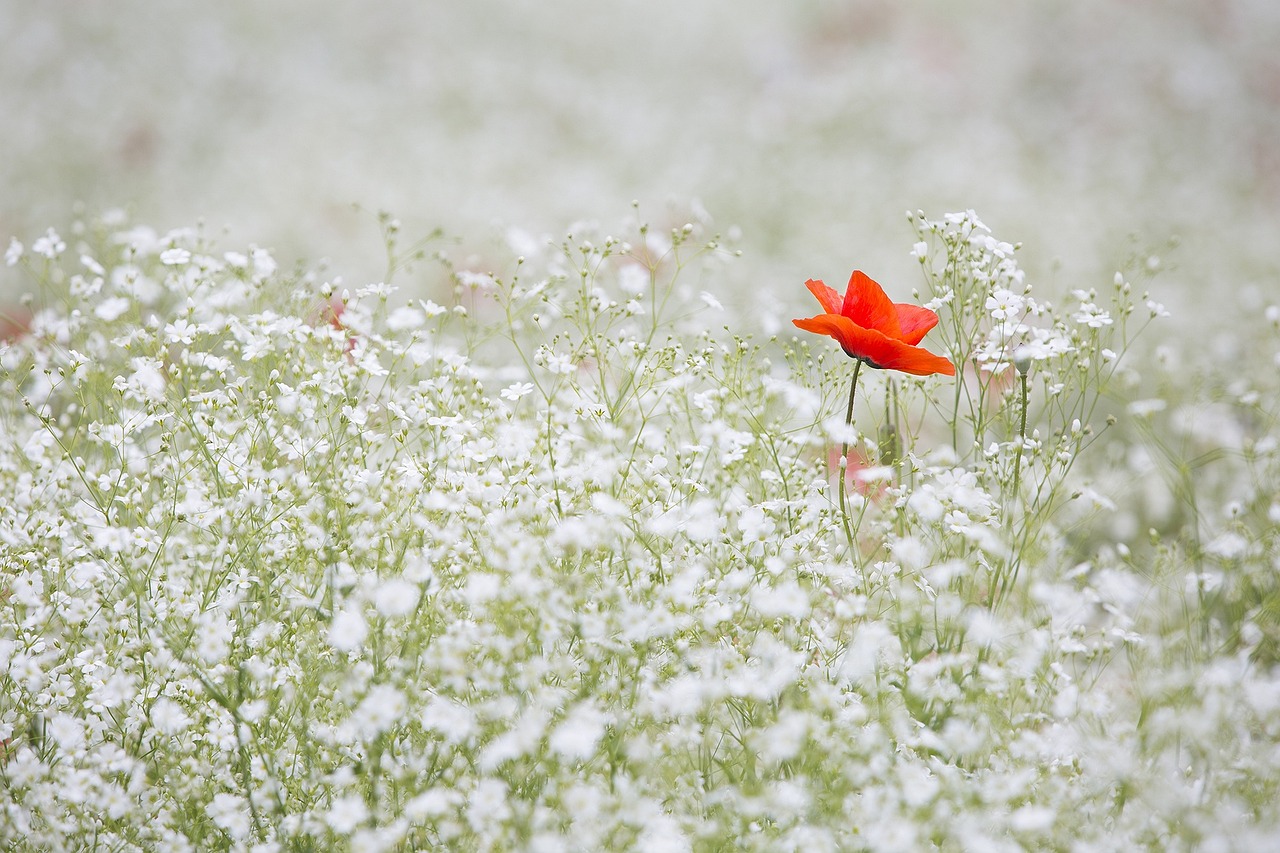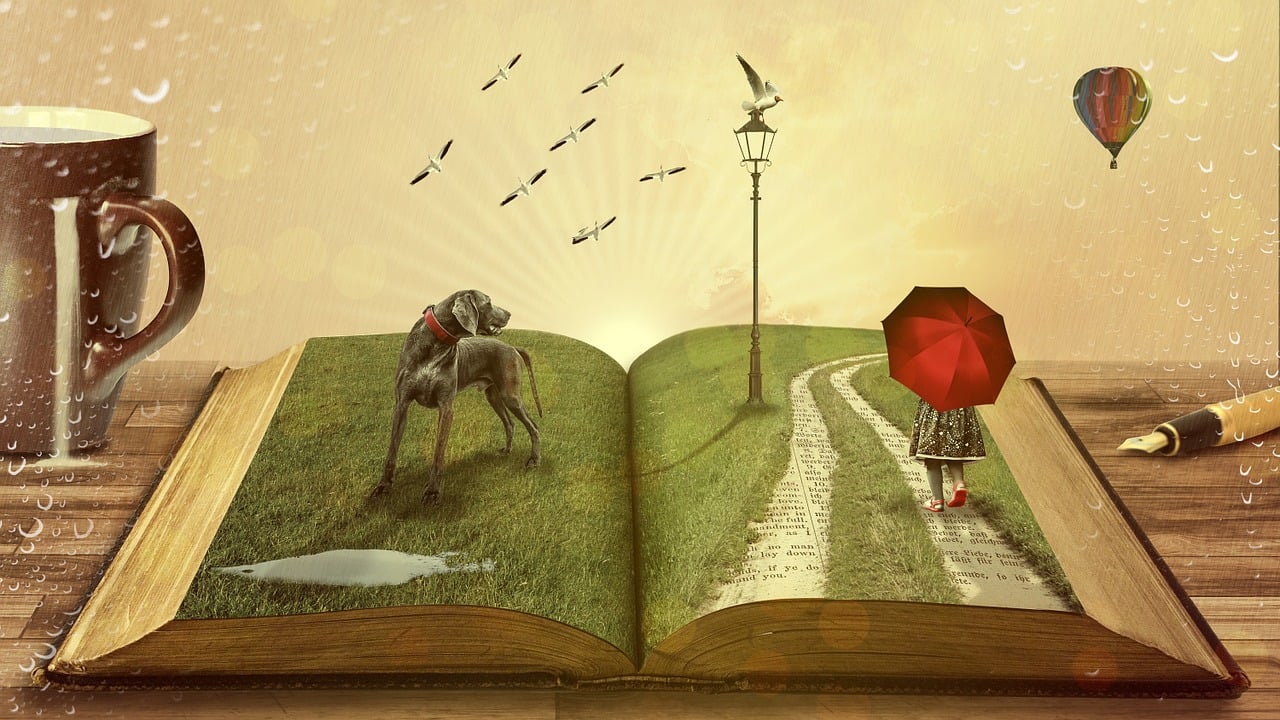Table of Contents
In the world of literature, flowers have long held a special place, serving as powerful symbols that enhance the depth and meaning of stories and poems. From the delicate beauty of a rose to the resilience of a sunflower, each bloom carries a unique symbolism that resonates with readers and adds layers of interpretation to the narrative. In this article, we embark on a literary journey to explore how flowers have been woven into the fabric of storytelling, enriching our understanding of characters, themes and emotions.
Blossoming Beauty in Literature: The Rich Symbolism of Flowers
Within the pages of literature, flowers have transcended their botanical essence to become powerful symbols that infuse stories and poems with deeper meaning and heightened emotions. Each petal, color and fragrance carries a unique symbolism that resonates with readers, adding layers of interpretation to the narrative. As we embark on this literary journey, we’ll explore how flowers have been thoughtfully woven into the tapestry of storytelling, enhancing our understanding of characters, themes and the human experience:
The Rose’s Allure: The rose, with its delicate beauty and fragrant allure, has been a recurring symbol of love and passion in literature. Whether depicted as a red rose symbolizing deep love or a white rose signifying purity and innocence, its presence evokes complex emotions and drives the plot forward, as seen in Shakespeare’s “Romeo and Juliet.”
The Lily’s Serenity: Lilies, with their pristine white petals and serene demeanor, often represent purity, virtue and transcendence. In works like “The Picture of Dorian Gray” by Oscar Wilde, lilies play a central role in contrasting the protagonist’s inner corruption with the external purity of the flowers.
The Sunflower’s Resilience: The sunflower, with its unwavering devotion to the sun, symbolizes loyalty, adoration and resilience. In literature, it can represent characters who endure adversity with unwavering determination, much like the titular character in “The Sunflower” by Simon Wiesenthal.
The Daisy’s Innocence: Daisies, with their simplicity and cheerful demeanor, are often associated with innocence and childhood. In “The Great Gatsby” by F. Scott Fitzgerald, the daisy motif underscores themes of nostalgia and the loss of innocence.
The Poppy’s Sleep: The poppy’s association with sleep and oblivion has been used to great effect in literature. In “The Wizard of Oz” by L. Frank Baum, the field of poppies lulls characters into a deep slumber, adding a dreamlike quality to the story.
The Violet’s Modesty: Violets, with their unassuming appearance, symbolize modesty and humility. In Charlotte Brontë’s “Jane Eyre,” violets play a significant role in characterizing the titular character’s personality and values.
The Lotus’s Enlightenment: In Eastern literature and philosophy, the lotus flower represents enlightenment, purity and spiritual awakening. It is a central motif in works like Herman Hesse’s “Siddhartha,” where it symbolizes the protagonist’s spiritual journey.
Flowers as Metaphors: Beyond specific floral symbols, flowers are often used metaphorically to convey complex emotions and themes. In Emily Dickinson’s poetry, for instance, the image of a “narrow fellow in the grass” can be seen as a metaphor for fear or death.
Gardens of Symbolism: Entire gardens, richly adorned with various flowers and plants, can serve as symbolic settings. In Frances Hodgson Burnett’s “The Secret Garden,” the neglected garden’s transformation mirrors the emotional growth of the characters.
Cultural Context: The symbolism of flowers can vary across cultures and time periods, enriching literary works with layers of cultural significance. Exploring these cultural nuances adds depth to our understanding of the text.
In conclusion, the world of literature has been graced by the enduring presence of flowers, which, as symbols, transcend time and place. Their rich symbolism enhances storytelling, providing readers with an opportunity to delve deeper into the emotions, themes and character dynamics at play. Like petals unfolding in the morning sun, the symbolic power of flowers in literature continues to captivate and enrich our literary experiences, making each story and poem a blossoming garden of interpretation and discovery.
Explore this link for a more extensive examination of the topic: Maya Angelou’s Still I Rise: Poem Analysis
The Language of Flowers
The use of flowers as symbols in literature traces its roots to the Victorian era, a time when communication was often veiled in layers of etiquette and restraint. “The Language of Flowers,” also known as floriography, allowed individuals to convey sentiments and emotions through the choice and arrangement of specific blooms. Each flower held its own meaning and these meanings were often employed in the exchange of messages between lovers, friends and secret admirers.
Expanding on the idea of using flowers as symbols in literature during the Victorian era:
The Literary Flourish of Floral Symbolism:
The Victorian era was not only a time of elaborate social etiquette but also a period when the language of flowers became a rich source of inspiration for writers, poets and novelists. This intricate form of communication deeply influenced literature and provided authors with a nuanced tool to convey complex emotions and themes. Here’s how this literary flourish unfolded:
Emotional Depth in Romantic Literature: Victorian literature, particularly romantic novels and poetry, embraced floral symbolism as a means to add layers of emotional depth to characters and their relationships. Authors like Jane Austen and the Brontë sisters used flowers as powerful metaphors to convey hidden desires, unspoken affections and the subtleties of love.
Character Development: Flowers often played a role in character development. A character’s choice of flowers, the way they presented them or their reaction to a floral gift could reveal essential traits or foreshadow events in the storyline. For instance, a character giving violets might signify their loyalty, while one receiving them might indicate their innocence.
Themes of Nature and Beauty: The Victorian era celebrated nature and its beauty and this theme frequently emerged in literature. Flowers became symbols of the natural world, representing both its delicate fragility and enduring strength. Works like Alfred Lord Tennyson’s “The Lady of Shalott” and John Keats’ “Ode to a Nightingale” are notable examples of poems that incorporated floral imagery to explore themes of life, death and beauty.
Hidden Desires and Secrets: The secretive nature of floriography lent itself well to stories of hidden desires, secrets and forbidden love. Novels such as Nathaniel Hawthorne’s “The Scarlet Letter” used flowers to emphasize the secrecy and taboo associated with certain relationships.
Contrasts and Irony: Authors often employed the language of flowers to create contrasts and irony in their narratives. A character receiving a bouquet of roses might signify love, but juxtaposing it with a wilted rose could foreshadow heartbreak or betrayal.
Social Commentary: Floral symbolism was sometimes used as a vehicle for social commentary. Writers critiqued the rigid social norms and expectations of their time by exploring the limitations and consequences of using flowers as a substitute for direct communication.
Universal Appeal: Floral symbolism was not limited to any specific genre or region. Writers from various cultures and backgrounds embraced this universal language of flowers, making it a widely recognized and appreciated element in literature.
In summary, the use of flowers as symbols in Victorian literature added layers of meaning, intrigue and emotional resonance to the stories of the era. It provided a captivating and versatile tool for authors to explore the complexities of human relationships, societal norms and the enduring beauty of the natural world. This literary tradition continues to influence modern literature, reminding us of the enduring power of nature’s symbols in storytelling.
Looking for more insights? You’ll find them right here in our extended coverage: The Language of Flowers – Plant Symbolism | Patuxent Nursery

The Rose
Perhaps the most iconic of all flowers in literature, the rose carries a spectrum of meanings. A red rose often symbolizes love and passion, as seen in William Shakespeare’s “Romeo and Juliet.” On the other hand, a white rose may signify purity or innocence.
The rose, often hailed as the reigning monarch of the floral kingdom in literature, holds a rich tapestry of symbolism that transcends its physical beauty. Its significance varies with the color it dons, making it a versatile emblem that authors and poets have woven into countless tales and verses throughout history.
In the world of literature, the red rose reigns supreme, a beacon of love and passion. William Shakespeare’s immortal classic, “Romeo and Juliet,” immortalizes this symbolism, where the red rose represents the intense, fiery ardor between the star-crossed lovers. It embodies desire, romance and the depth of emotion that transcends boundaries and defies fate. A red rose becomes an emblem of love’s intoxicating power, capable of stirring hearts and kindling the most profound connections.
Conversely, the white rose steps onto the literary stage as a symbol of purity and innocence. It is a fragile bloom that embodies the untarnished, unspoiled nature of the human spirit. In stories, the white rose often represents purity of heart, unblemished virtue and the delicate, untouched beauty that endures in the face of adversity. Like a beacon of hope, it signifies a moral compass that guides characters through the challenges they face.
Yet, the rose’s expressive range extends far beyond these two archetypes. Yellow roses, for instance, may convey friendship or joy, while pink roses can evoke sentiments of admiration and gratitude. The black rose, though rare in nature, has been cast as a symbol of mystery or farewell in literature.
The rose’s chameleon-like nature continues to inspire writers and readers alike, offering a powerful canvas upon which to paint a kaleidoscope of human emotions and experiences. Its petals hold the stories of love and heartbreak, innocence and virtue, friendship and gratitude and even the enigmatic mysteries of life. It stands as a testament to the enduring power of nature’s beauty to speak to the human soul, transcending time and culture in the pages of literature.
Should you desire more in-depth information, it’s available for your perusal on this page: The Symbolism of Flowers in Literature and Poetry: A Look at the …

The Daisy
Daisies are often associated with simplicity and purity. In F. Scott Fitzgerald’s “The Great Gatsby,” the character Daisy Buchanan embodies these qualities, though her seemingly pure exterior masks a more complex personality.
Daisies, with their unassuming charm and delicate petals, have long been symbols of simplicity and purity. These innocent flowers have the power to evoke feelings of nostalgia and an appreciation for the uncomplicated beauty of nature. However, the association of daisies with simplicity takes on a deeper dimension when we consider their role in literature and the complex characters they can represent.
In F. Scott Fitzgerald’s classic novel “The Great Gatsby,” the character Daisy Buchanan is often likened to a daisy, with her name and persona symbolizing these very qualities. Daisy’s outward demeanor exudes an air of innocence and purity, much like the daisy’s appearance in a field of wildflowers. She is described as ethereal and enchanting, drawing people to her with a magnetic charm that mirrors the daisy’s ability to captivate with its simplicity.
Yet, as with the daisy’s symbolism, there is more to Daisy Buchanan than meets the eye. Beneath her seemingly pure exterior lies a complex and multifaceted personality. Daisy’s life is entangled with wealth, privilege and societal expectations, mirroring the intricate layers of human nature. Her choices and actions throughout the novel reveal a character torn between desire and responsibility, love and loyalty, much like the contrast between the daisy’s innocent appearance and the complexities of the world it inhabits.
In this juxtaposition of Daisy Buchanan with the symbolism of daisies, Fitzgerald masterfully explores the theme of appearances versus reality. Daisy’s character challenges the notion of simplicity and purity, highlighting the complexities and contradictions inherent in human nature itself. Through Daisy, we are reminded that even the most seemingly straightforward individuals can harbor hidden depths and inner turmoil.
Ultimately, the daisy’s association with simplicity and purity in “The Great Gatsby” serves as a lens through which we can view the novel’s themes of illusion, disillusionment and the American Dream. Daisy Buchanan, like the daisy itself, remains a compelling character whose allure and complexity continue to fascinate readers and serve as a reflection of the intricate tapestry of human existence.
Additionally, you can find further information on this topic by visiting this page: ‘Ophelia’, Sir John Everett Millais, Bt, 1851–2 | Tate

The Lily
Lilies are frequently linked to themes of renewal and rebirth. In Oscar Wilde’s “The Picture of Dorian Gray,” lilies are a recurring motif, representing the fleeting nature of youth and beauty.
Lilies are frequently linked to themes of renewal and rebirth, their graceful blooms symbolizing the cyclical nature of life. In Oscar Wilde’s literary masterpiece, “The Picture of Dorian Gray,” lilies take on a poignant and recurring motif. They represent far more than just the beauty of the flower; they encapsulate the central themes of the novel — the fleeting nature of youth and the corrupting influence of a hedonistic lifestyle.
The Lily as a Symbol: Throughout the novel, the white lily serves as a symbol of purity and innocence, a striking contrast to the moral decay and debauchery that characterizes Dorian Gray’s life. The lily’s pristine whiteness represents the unspoiled youth that Dorian possesses at the beginning of the story, a youth that he is willing to sacrifice to preserve his external beauty and indulge in a life of hedonism.
The Portrait’s Dark Secret: In the novel, Dorian Gray’s portrait ages and becomes increasingly hideous while he himself remains youthful and handsome. The lily serves as a haunting reminder of the dark secret hidden within the portrait. As Dorian’s portrait deteriorates, it becomes a reflection of his moral corruption and the toll his decadent lifestyle takes on his soul. The juxtaposition of the decaying portrait and the seemingly eternal beauty of the lily underscores the moral deterioration at the heart of the story.
The Temptation of Beauty: Dorian’s obsession with his own external beauty and the pursuit of pleasure at any cost drive the narrative. The lily, with its fleeting and delicate nature, becomes a symbol of the ephemeral quality of physical beauty and the consequences of valuing it above all else. Dorian’s fixation on preserving his youthful appearance ultimately leads to his downfall, as he descends into a life of moral degradation and corruption.
A Thought-Provoking Allegory: Oscar Wilde’s use of the lily as a recurring motif in “The Picture of Dorian Gray” invites readers to contemplate the complex interplay between external appearances and inner morality. The lily’s presence serves as a powerful allegory for the consequences of pursuing beauty and pleasure without regard for the consequences. It challenges readers to reflect on the nature of true beauty, the passage of time and the moral choices that shape our lives.
In conclusion, the lily’s role in “The Picture of Dorian Gray” is far more than ornamental; it is a thought-provoking symbol that weaves together themes of youth, beauty, morality and the human condition. It reminds us that external beauty, like the lily’s delicate bloom, is fleeting and that the choices we make in pursuit of it can have profound consequences on the essence of our souls.
Additionally, you can find further information on this topic by visiting this page: What is Symbolism? – FLG 4533/ 6533 Art, Politics and Propaganda …

The Sunflower
Sunflowers are known for their symbolism of adoration and loyalty. Vincent van Gogh’s famous painting of sunflowers captures the essence of these emotions.
Sunflowers are known for their symbolism of adoration and loyalty. Vincent van Gogh’s famous painting of sunflowers captures the essence of these emotions with a depth and intensity that continues to captivate viewers around the world.
Van Gogh’s series of sunflower paintings, created in the late 1880s, are more than just representations of a popular flower; they are a testament to the power of art to convey profound emotions. In these vibrant works, he immortalized the simple yet powerful beauty of sunflowers, elevating them from mere botanical subjects to symbols of human connection and sentiment.
The intense hues of yellow and orange in Van Gogh’s sunflowers evoke feelings of warmth and affection. They speak of the unspoken bonds between friends or the enduring love of family. The choice to paint these flowers at various stages of their life cycle, from bud to full bloom to withering, adds layers of meaning. It suggests the passage of time, the impermanence of life and the steadfastness of genuine affection, which endures even as circumstances change.
Van Gogh’s bold and expressive brushwork, with thick impasto layers of paint, imbues the sunflowers with a sense of vitality and raw emotion. The swirling patterns and vibrant colors seem to convey the inner tumult of the artist’s own emotions, creating a powerful connection between the viewer, the artist and the subject.
Moreover, the repetition of the sunflower motif in multiple paintings within the series hints at the idea that adoration and loyalty are themes that can be explored from various angles and perspectives. Each sunflower painting tells a unique story, yet they are all interconnected by the overarching theme of human connection and devotion.
As we gaze upon Van Gogh’s sunflowers today, we are reminded of the enduring power of art to capture the essence of our deepest emotions. They serve as a timeless reminder of the beauty that can be found in everyday life and the profound connections we share with one another. Van Gogh’s sunflowers continue to inspire us to express our feelings, whether it’s adoration for a loved one or loyalty to a cherished cause, through the creative medium of our choice. In this way, they bloom eternally in our hearts and minds as a symbol of the enduring power of love and devotion.
You can also read more about this here: Ah! Sun-flower by William Blake – Poem Analysis

The Poppy
Poppies often symbolize sleep, oblivion or death due to their association with the opium poppy. In literature, they are sometimes used to convey themes of addiction and escape.
Poppies, with their delicate petals and vibrant colors, have a rich symbolic history that extends beyond their mere aesthetic appeal. Their association with the opium poppy lends them a deeper and often somber meaning. In literature and art, poppies are employed as powerful symbols to convey profound themes of addiction, escape and the human condition.
A Symbol of Rest and Sleep: Poppies have long been associated with sleep and rest, stemming from their traditional use in herbal medicine. The opium poppy, Papaver somniferum, contains compounds that have sedative properties. As such, the poppy has become emblematic of slumber and tranquility. In literature, the image of a field of poppies often represents a peaceful and dreamlike state, offering respite from the harsh realities of the world.
Oblivion and the Passage of Time: Poppies can also symbolize oblivion, suggesting a forgetfulness or a letting go of the past. In the context of war, the sight of poppies growing on battlefields inspired the famous war poem “In Flanders Fields” by John McCrae. Here, the poppies symbolize the lives lost and forgotten, as well as the relentless march of time. Poppies serve as a poignant reminder of the impermanence of life and the inevitability of change.
Themes of Addiction and Escape: The opium poppy’s association with the highly addictive substance, opium, has led to the use of poppies as symbols of addiction and escape in literature. Characters who succumb to the allure of the poppy may find themselves ensnared in a cycle of dependence, seeking refuge from their troubles in its seductive embrace. Thus, poppies serve as cautionary symbols, cautioning against the dangers of seeking solace through substances.
Contrasts and Complexity: Poppies, like many symbols, possess a duality that makes them rich and multi-dimensional. They can represent both the peaceful serenity of sleep and the perilous allure of addiction. In this complexity, they mirror the intricacies of the human experience, where moments of respite and escape can be entwined with moments of vulnerability and loss.
In conclusion, the symbolism of poppies is a testament to the enduring power of nature to inspire profound human emotions and themes. Whether they evoke notions of sleep, oblivion, addiction or escape, poppies continue to be a source of fascination and contemplation in literature and art, inviting us to explore the intricate tapestry of human existence.
For a comprehensive look at this subject, we invite you to read more on this dedicated page: ‘Ophelia’, Sir John Everett Millais, Bt, 1851–2 | Tate

The Lotus
In Eastern literature, the lotus holds deep spiritual significance, representing purity, enlightenment and rebirth. It features prominently in works like Herman Hesse’s “Siddhartha.”
In Eastern literature, the lotus flower transcends its botanical existence to become a powerful symbol of profound spiritual concepts. Its presence in literary works like Herman Hesse’s “Siddhartha” underscores its enduring significance as a harbinger of purity, enlightenment and rebirth.
The lotus, with its unique life cycle, serves as a poignant metaphor for the journey of the soul. Emerging from the muddy depths of stagnant waters, its pristine petals unfurl atop the surface, untouched by the impurities below. This emergence mirrors the human quest for purity and spiritual awakening—a rising above the mire of material desires and attachments.
Purity, a central theme in Eastern philosophy and spirituality, is symbolically embodied by the lotus. Its radiant, untainted blossoms inspire seekers to strive for inner purity and transcendence. Just as the lotus remains unspoiled despite its surroundings, individuals are encouraged to cultivate inner purity and virtue, fostering a sense of moral and spiritual clarity.
Enlightenment, another core tenet of Eastern thought, is encapsulated in the lotus’s radiant beauty and its capacity to thrive in the face of adversity. Like the lotus, individuals are encouraged to embrace the path of self-discovery, seeking to illuminate their inner selves and awaken to higher states of consciousness. The lotus, with its graceful presence, serves as a beacon of hope and inspiration along this journey.
Moreover, the lotus symbolizes the idea of rebirth and renewal. Its daily cycle of sinking beneath the water at night and rising again at dawn mirrors the cyclical nature of existence. Just as the lotus emerges anew each day, individuals are reminded of their capacity for transformation, growth and renewal—a concept deeply embedded in Eastern spiritual traditions.
In “Siddhartha,” Herman Hesse skillfully weaves the symbolism of the lotus into the protagonist’s spiritual journey. As Siddhartha seeks enlightenment and self-discovery, the lotus becomes a recurring motif, reflecting his evolving understanding of life, purity and the interconnectedness of all things.
In summary, the lotus’s role in Eastern literature extends far beyond its physical beauty. It serves as a multifaceted symbol, encouraging individuals to embark on a quest for purity, enlightenment and spiritual rebirth. Its presence in literary classics like “Siddhartha” continues to inspire readers to explore the profound depths of the human spirit and the timeless wisdom of Eastern philosophy.
You can also read more about this here: Lotus-Eater | Island, Immortality & Mythology | Britannica

Adding Depth to Characters and Themes
Authors skillfully incorporate floral symbolism to imbue their characters with depth and to convey complex themes. Flowers can act as foreshadowing devices, reflecting a character’s inner turmoil or a looming conflict. They also serve as metaphors for personal growth, transformation and the impermanence of life.
Authors are masterful weavers of words and one of the subtle yet powerful tools in their literary arsenal is the use of floral symbolism. Through the careful selection and placement of flowers in their narratives, authors breathe life into their characters and convey intricate themes that resonate with readers on multiple levels. Flowers, in the hands of skilled writers, become more than mere decorative elements; they serve as poignant foreshadowing devices, mirrors reflecting a character’s inner turmoil or the looming conflict on the horizon. Additionally, flowers are metaphors for the profound journey of personal growth, the transformative power of life’s experiences and a constant reminder of the impermanence that defines the human condition.
Floral symbolism in literature is like a secret language, an unspoken code that enriches the storytelling experience. When a character is associated with a particular flower, it becomes a subtle clue, an unspoken promise of the narrative’s unfolding events. A single rose, for instance, might foreshadow a budding romance, while a withered bloom might hint at a love soured by time or circumstance. Through such delicate hints, authors engage readers in a dance of anticipation, allowing them to unravel the story’s intricacies and connect more deeply with the characters’ emotional journeys.
Flowers also offer a canvas upon which an author can paint the internal landscapes of their characters. The choice of flower can symbolize a character’s personality, desires or struggles. A character’s preference for a particular bloom may signify their romantic inclinations, their yearning for beauty and love or their inclination toward solitude. Just as the petals of a flower can conceal or reveal its inner core, so too can floral symbolism be used to hide secrets or reveal hidden truths about a character’s psyche.
Furthermore, flowers are masterful metaphors for the human experience. They embody the essence of life’s ephemeral nature, blooming in all their glory only to fade and wither away. This cycle of birth, growth, decay and rebirth mirrors the arc of a character’s journey, reflecting themes of transformation, renewal and the inevitability of change. The wilting of a flower, much like a character’s trials and tribulations, reminds readers of the impermanence of life and the inevitability of endings.
In conclusion, authors harness the evocative power of floral symbolism to infuse their narratives with depth and meaning. Flowers in literature are not mere decorative props but rather multifaceted tools that serve as foreshadowing devices, mirrors reflecting character emotions and metaphors for the profound human experience. As readers immerse themselves in stories interwoven with floral symbolism, they embark on a literary journey that resonates on emotional, intellectual and existential levels, making the characters and their narratives come alive in the most enchanting and thought-provoking ways.
For a comprehensive look at this subject, we invite you to read more on this dedicated page: The Symbolism of Flowers in Literature and Poetry: A Look at the …

Flowers in literature are more than just decorative elements; they are potent symbols that enhance storytelling and evoke emotional responses in readers. Whether used to convey love, innocence or the passage of time, floral symbolism adds layers of meaning and complexity to characters, themes and the overall narrative. Through the language of flowers, authors communicate emotions, foreshadow events and invite readers to explore the deeper layers of their literary creations. The next time you encounter a bouquet of flowers in a story or poem, take a moment to appreciate the intricate web of symbolism that they weave, enriching the literary tapestry for generations to come.
Should you desire more in-depth information, it’s available for your perusal on this page: oop Flashcards | Quizlet
More links
Looking for more insights? You’ll find them right here in our extended coverage: The Symbolism of Flowers in Literature Over Time – Bookstr
